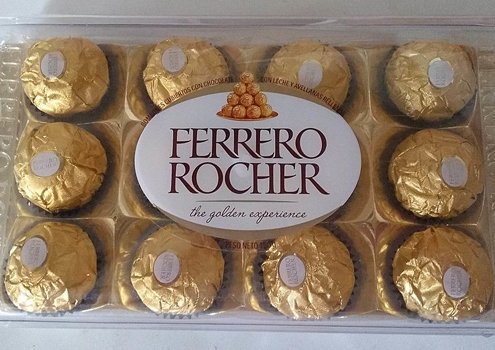Reading time: Less than 3 minutes
Do you see yourself as a bad writer? Read on for advice on why and how you can reframe this problem.
My 18-year-old daughter, Claire, last week announced she wanted to make a nosegay of Ferrero Roche chocolates as a gift for a friend who was performing a violin solo at school.
How do you turn a bunch of foil-wrapped chocolates into flowers? Short of a Harry Potteresque spell, I had no idea, but my daughter used this YouTube tutorial to bring me up to speed. Oh, and she wanted my help.
Trouble is, I am NOT a crafts person. I’m a good cook…. Handy when it comes to English homework… Especially motivated in giving career advice…. But let’s just say that, to me, the thought of using perfectly edible chocolate for a craft seemed like a tragic waste of time. Why slow down the speed with which one could pop a delicious confection into the mouth?
Nevertheless, I helped my daughter find skewers, ribbon and tissue paper. She started promisingly enough on her own, but as concert time approached, she welcomed even my two left hands.
I couldn’t get the tissue paper to wrap around the outside of the flowers as the video had shown but, ironically, crumpling the paper first made it look better and more natural. When we had six “blooms” prepared, a new problem loomed. How could we wrap them so they looked anything like a bouquet? The video was more vague than helpful about this.

My final tip was perhaps the most useful. I suggested we wrapped the base in a contrasting piece of tissue paper. The verdict? Mom does know best.
I tell you this story not to brag about my craftiness (no risk of you believing that!) but because I think it illustrates an important point about writing, too.
Perhaps you think of yourself as a bad writer, as I think of myself as a bad crafter. But surely there is some aspect of writing that you enjoy or are good at. I don’t enjoy crafts, but I like solving problems, and my daughter had presented me with a good one. Fixing it was fun!
Surely, if you really think about writing, you can find some part of the job that you enjoy. Here is a list you might want to consider:
- Are you good at explaining technical information in plain and simple English?
- Do you have an ear for quotes and a particular talent for extracting interesting ones from sources?
- Are you especially skilled at description?
- Do you have a sense of humour that allows you to find the funny in just about any situation?
- Were you born with the ability to create attention-getting headlines? (I’ll never forget the person who came up with the name “Chop-Chop Cioppino” for fast-to-make Italian fish stew.)
- Do you instinctively add “connectors” (eg: but, on the other hand, meanwhile, as a result) to everything you write?
There are many different skills that go into writing. Focus on the one(s) you’re good at and fake the rest. With more practice, you will get better.
As I give you this advice, I think of one of my coaching students who has recently learned how to tell stories in his writing, and, as a result, has obliterated a terrible case of writer’s block (way to go, Rob!) We all have different gifts — things that we’re more or less automatically good at doing or things that we pick up quickly. If we focus on what we can do, it’s easier to become better at everything else.
If I could help Claire make a Ferrero Roche bouquet, I think just about anything is possible.


